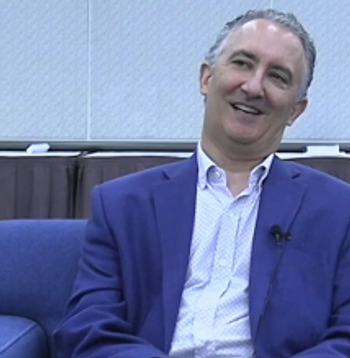
Social Misuse of Disorder Designation, Part III: Harm and Ethical Validity
At a minimum, a mental disorder is considered an undesirable and unwanted condition either for the individual or the society. However, that is clearly very relativistic and does little to protect against social misuse of disorder designation.
Dr Aftab is a geriatric psychiatry fellow at University of California San Diego (UCSD) in La Jolla, CA, and a former psychiatry resident at Case Western Reserve University/University Hospitals Cleveland Medical Center in Cleveland. He is also a member of the Psychiatric Times Advisory Board. He can be reached at awaisaftab@gmail.com.
This is the third and final part of a three-part series on a pertinent philosophical question in the era of diagnostic inflation: What conceptual means are available to prevent deviant and undesirable behavioral conditions from being diagnosed as mental disorders as a result of social bias and stigma? The series is based on an essay (“Social Misuse of Disorder Designation: Exploring Dysfunction and Harm-Based Conceptual Defenses”) that was awarded the 2018 Karl Jaspers Award by the Association for the Advancement of Philosophy and Psychiatry. Dr Aftab has been actively involved in initiatives to educate psychiatrists and trainees on the intersection of philosophy and psychiatry, and this series constitutes one effort to bring this discussion to a wider audience.
In
At a minimum, a mental disorder is considered an undesirable and unwanted condition either for the individual or the society. However, that is clearly very relativistic and does little to protect against social misuse of disorder designation.
We can, however, restrict undesirability to certain kinds of harm to come up with a criterion that offers more protection. Consider the following degrees of undesirability:
1. Unwanted/undesired/negatively evaluated by the individual only;
2. Unwanted/undesired/negatively evaluated by the society;
3. Associated with harm (distress/disability/harm to others) (DSM);
4. Associated with intrinsic harm (distress or disability which is a direct result of a specific biological or psychological process).
The only way to reliably exclude ego-dystonic homosexuality from the realm of mental disorders is to require intrinsic harm to be a necessary criterion for a mental disorder definition. Homosexuality can be (and was) negatively evaluated by individuals as well as society, and it can be (and was) perceived to be harmful according to social values; ego-dystonic homosexuality is also associated with distress.
There is no conceptually a priori reason for limiting harm in the definition of mental disorder to intrinsic harm. It is an artificial maneuver that is difficult to justify on conceptual analysis aside from saying that it offers protection against social prejudice. This point has been well-articulated by
In any case, it would be an artificial polarisation to attempt to understand distress or harm as separable from cultural values, and it is not obviously desirable for healthcare to be informed by a narrow view of harm. This would run counter to ideals of holistic healthcare and attempts understand people in context. If correct, Wakefield rightly extends ‘harm’ to cultural standards. But if so, then socially undesirable conditions are not excluded from the definition of disorder by distress or harm criteria.
I agree with Bingham and Banner that such a move would conceptually be an artificial polarization. There is, however, a strong ethical argument to be made requiring intrinsic harm as a necessary criterion for mental disorder designation in the practice of psychiatry. We have an ethical obligation to prevent social misuse of disorder designation, and we need a conceptualization of mental disorder that would exclude “states that are wrongly pathologised due to prejudice and social exclusion, including those we might not have identified as such yet.”
Let us dig further into the notions of distress and impairment.
Distress
Distress refers to some sort of psychological suffering. Although the DSM makes no further classifications, the following distinctions can be made regarding types of distress:
Intrinsic distress is distress that is the direct result of a specific biological or psychological process.
Extrinsic distress is not the direct result of a specific biological or psychological process. It can originate from conflict with society (ie, individual would not experience distress if society were to accept the condition as normal-exogenous distress) or it can originate from within the individual due to internalized moral and social values (ie, internalized distress) but not as a direct result of biological or psychological processes.
The distinction between intrinsic distress and extrinsic distress in the case of a particular condition can be facilitated by means of a thought experiment. If social norms were to change such that the condition in question is no longer considered disordered, does the distress disappear? Even if society were to accept generalized anxiety as a normal variant, the persistent anxiety remains distressing for the individual experiencing it. In the past, homosexual individuals were distressed by the sexual orientation due to the antagonism with social norms and sought conversion therapy for that reason. However, with change of social norms, homosexual individuals are (by and large) no longer distressed.
Functional impairment
As utilized in the harm criterion, “functional impairment” (or “functional disability”) refers to the negative consequences in social or occupational functioning or other important activities of life. For instance, heart failure is impairing as it restricts physical activity; agoraphobia can be impairing if one becomes unable to leave the house. Functional impairment is a product of the interaction between a deficit and the environment, and the presence of impairment and the degree of impairment may depend on the environmental context. For instance, attention deficits and hyperactivity in a child may be quite impairing in a highly structured modern classroom but may have had little to no impairment in pre-modern societies.
One important consideration is whether functional impairment is direct product of the biological processes in question or is a result of society’s stigmatization. For instance, red hair by itself leads to no functional impairment, but individuals with red hair may not be able to find employment because of social stigma.
Paraphilias can cause impairment in sexual life in the absence of appropriate stimulus. However, it is unclear if this is an impairment just because society considers the behaviors pathological. Voyeurism or sadomasochism can be highly impairing if one is unable to find consensual sexual partners with whom to engage. Similarly, the more stigmatized these conditions are in a society, the more difficult it will be to find consensual partners. If impairment disappears simply by society’s acceptance of that behavior as a non-pathological normal variant, it is likely a result of society’s discrimination and I will term it extrinsic impairment (in contrast to intrinsic impairment, which is a direct result of a specific biological or psychological process).
Intrinsic harm
It is fairly obvious that distress occurs in cases of socially deviant behavior and conflicts between individual and society. The requirement for distress alone does not protect social deviance from being pathologized. Distress or impairment that results from social deviance and conflict is extrinsic. It is different from intrinsic distress and intrinsic impairment, which are a direct result of the biological or psychological processes in question. A harm criterion that restricts disorder designation only to cases of intrinsic distress and intrinsic functional impairment can, therefore, protect against disorder designations of extrinsic distress and extrinsic impairment. (
Ethical validity
Based on the above discussion of harm, I posit the notion of ethical validity of disorder designation. Ethical validity arises from considerations of intrinsic harm as well as considerations of harm caused by disorder designation. Harm caused by disorder designation includes all the ways in which disorder designation prevents individuals from flourishing in a manner that those without a disorder designation can flourish. This includes imposition of sick role, social discrimination and stigmatization, production of self-guilt and self-doubt in the individuals, unnecessary-possibly coercive-treatment, and barriers to progressive social change. Disorder designation lacks ethical validity in the case of conditions without intrinsic harm.
It is easy to see why it is ethically wrong to classify homosexuality or red hair as a disorder. Both conditions lack intrinsic distress and intrinsic impairment. In both cases, there is harm caused by disorder designation. A person whose sexual orientation is considered a disorder and a person whose red hair is considered a disorder cannot flourish in the same manner as a person whose differences are seen as normal variants.
The biggest practical challenge in implementing harm validity as a tool to limit disorder designation is that it may not always be possible to make the distinction between intrinsic distress and internalized distress, as both may be present simultaneously. In the case of ego-dystonic homosexuality, it is clear in hindsight that the distress was internalized. However, consider the distress associated with paraphilic disorders-how much of it is intrinsic and how much of it is extrinsic? It may also vary depending on the specific paraphilia. The degree of intrinsic distress may be different in pedophilic disorder compared to fetishistic disorder. It may very well be the case that all of distress with paraphilias is extrinsic, but it is difficult to determine conclusively. Another example would be hypoactive sexual desire disorder. How much of distress associated with low sexual desire is a direct result of the low sexual desire, and how much of it is due to our contemporary social norms that place a high emphasis on the need for an active sexual life?4
I suggest that even when these distinctions are not easily sorted, an emphasis on determining the presence of intrinsic harm would serve to stimulate social and psychiatric discourse on the nature of associated distress, particularly if it allows individuals with the conditions to talk about their subjective experience of distress. Perhaps, over time, stimulation of such discourse will lead to greater diagnostic clarification.
Conclusion
In this three-part essay I have dealt with the thorny question of what conceptual defenses are available to restrict the ability of a society to arbitrarily designate negatively valued behavioral states as mental disorders. Ego-dystonic homosexuality presents a way to stress test candidate defense strategies; ego-dystonic homosexuality is ideal for this purpose since there is widespread consensus in contemporary psychiatry regarding its non-pathological status. Plus, any definition of mental disorder that simply requires the presence of distress in the individual without an analysis of the nature of distress will fail to exclude ego-dystonic homosexuality and other similar conditions where distress is generated because of social conflict. Notions of dysfunction, including objectivist notions by Boorse and Wakefield, offer limited defense, since the presence of dysfunction is already inferential in the vast majority of behavioral disorders and, even in cases like homosexuality, the question of whether dysfunction is present has proven remarkably elusive. Evaluative criteria of harm provide similarly weak defenses, either because they are highly relativistic or because they are unable to exclude distress resulting from social conflict. Instead, the only way to reliably exclude ego-dystonic homosexuality from the realm of mental disorders is to require intrinsic harm to be a necessary criterion for a mental disorder definition. There is no a priori reason for this requirement based on conceptual analysis of mental disorder, but there is a strong ethical argument in support. There are practical challenges in distinguishing between intrinsic distress and internalized distress but requiring intrinsic harm as a criterion would serve to stimulate social and psychiatric discourse on the nature of associated distress and lead to greater diagnostic clarification.
References:
1. Wakefield JC.
2. Bingham R, Banner N.
3. Rashed AM, Bingham R.
4. Aftab A, Chen C, McBride J.
Newsletter
Receive trusted psychiatric news, expert analysis, and clinical insights — subscribe today to support your practice and your patients.

















